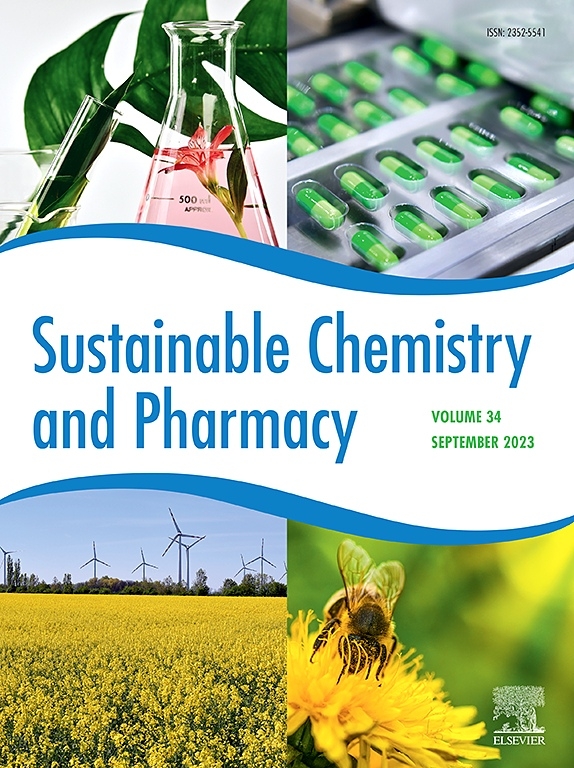IF 5.5
2区 化学
Q2 CHEMISTRY, MULTIDISCIPLINARY
引用次数: 0
摘要
用于热能储存的相变微胶囊在各个领域都有广泛的应用。然而,相变材料的壁材只有一小部分来自于生物,这给环境带来了很大的压力。本文制备了一种生物基聚脲微胶囊。它以 HMDI 为油性单体,以生物基 1,5-戊二胺为水性单体,通过界面聚合法制备而成。该方法简便易行,并通过实验探索了制备微胶囊的最佳工艺条件。结果表明,制备的生物基聚脲相变微胶囊外观呈球形,粒度分布均匀,平均粒径在 3 μm 以上。在最佳条件下,微胶囊的封装效率为 80.9%,熔化焓高达 194.2 J/g。与纯正十八烷相比,所获得的微胶囊具有良好的耐热性。在添加 1,5-戊二胺的基础上,得到的微胶囊对环境友好,具有更好的储能前景。使用生物基微胶囊制备的恒温织物具有良好的温度调节性和耐水性。本文章由计算机程序翻译,如有差异,请以英文原文为准。

Preparation and characterization of n-octadecane @ bio-based polyurea microcapsules
The phase change microcapsules for thermal energy storage have wide applications in various fields. However, only a small portion of the wall materials used for phase change materials are sourcing from biology, which puts a lot of pressure on the environment. In this paper, we prepared a bio-based polyurea microcapsule. It was prepared by the interfacial polymerization method using HMDI as an oily monomer and bio-based 1,5-pentanediamine as an aqueous monomer. The method is convenient and the optimum process conditions for microcapsule preparation were explored experimentally. The results showed that the prepared bio-based polyurea phase change microcapsules present a spherical appearance and uniform size distribution, with an average particle size of 3 μm or more. Under the optimal conditions, the microcapsules with an encapsulation efficiency of 80.9 %, showing a high enthalpy of melting of 194.2 J/g. Compared with the pure n-octadecane, the obtained microcapsules exhibit good heat-resistance. Based on the addition of 1,5-pentanediamine, the obtained microcapsules are environmentally friendly and have better prospects for energy storage. The thermoregulated fabrics were prepared using bio-based microcapsules,which have good temperature regulation and water washing resistance.
求助全文
通过发布文献求助,成功后即可免费获取论文全文。
去求助
来源期刊

Sustainable Chemistry and Pharmacy
Environmental Science-Pollution
CiteScore
8.20
自引率
6.70%
发文量
274
审稿时长
37 days
期刊介绍:
Sustainable Chemistry and Pharmacy publishes research that is related to chemistry, pharmacy and sustainability science in a forward oriented manner. It provides a unique forum for the publication of innovative research on the intersection and overlap of chemistry and pharmacy on the one hand and sustainability on the other hand. This includes contributions related to increasing sustainability of chemistry and pharmaceutical science and industries itself as well as their products in relation to the contribution of these to sustainability itself. As an interdisciplinary and transdisciplinary journal it addresses all sustainability related issues along the life cycle of chemical and pharmaceutical products form resource related topics until the end of life of products. This includes not only natural science based approaches and issues but also from humanities, social science and economics as far as they are dealing with sustainability related to chemistry and pharmacy. Sustainable Chemistry and Pharmacy aims at bridging between disciplines as well as developing and developed countries.
 求助内容:
求助内容: 应助结果提醒方式:
应助结果提醒方式:


